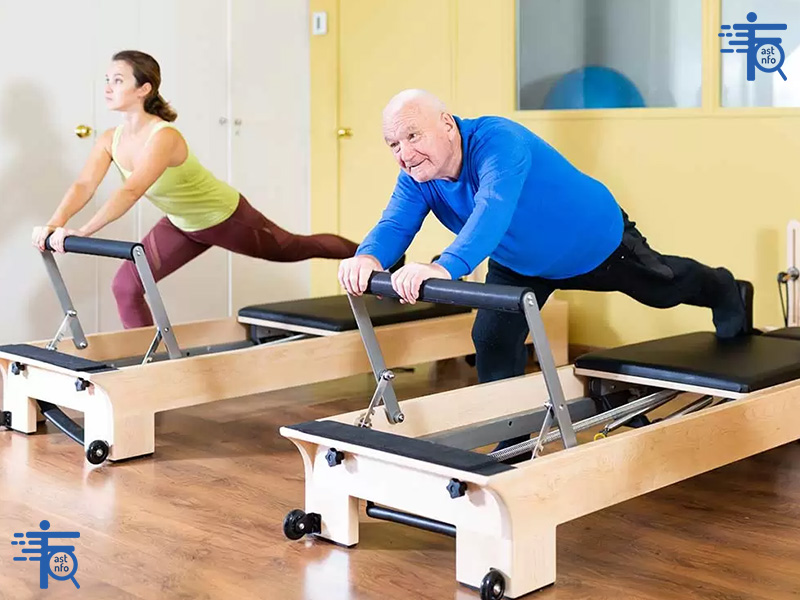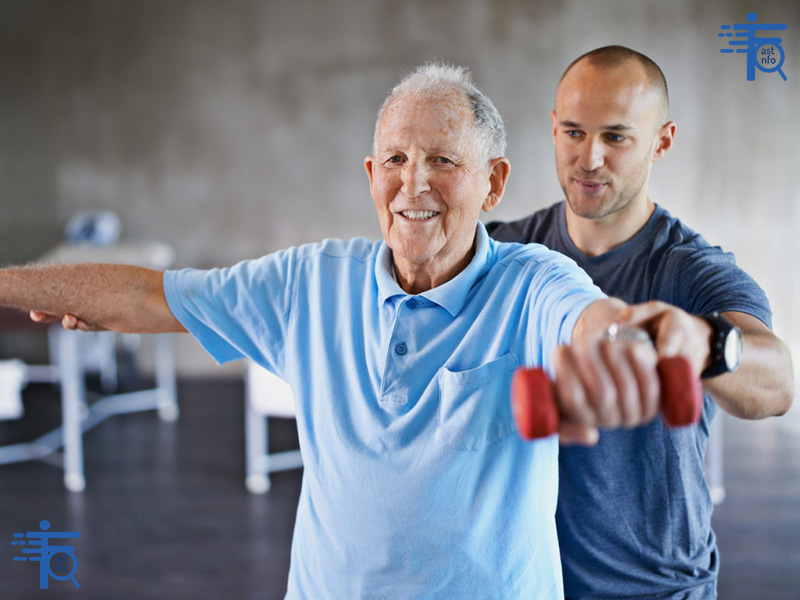Health Benefits of Pilates for Older Adults
Pilates is an excellent form of exercise for older adults, offering a wide range of health benefits that improve physical function, mental well-being, and overall quality of life. Here’s a detailed look at how Pilates can benefit older adults:
1. Improves Strength and Muscle Tone
- Why It Matters: As we age, muscle mass naturally declines (a process called sarcopenia), leading to weakness and reduced mobility.
- How Pilates Helps: Pilates focuses on controlled movements that engage multiple muscle groups, helping to build strength and maintain muscle tone.
- Example Exercises: Leg circles, planks, and the hundred.
2. Enhances Flexibility
- Why It Matters: Reduced flexibility can lead to stiffness, poor posture, and an increased risk of injury.
- How Pilates Helps: Pilates incorporates dynamic stretching and lengthening movements that improve flexibility and range of motion.
- Example Exercises: Spine stretch forward, saw, and mermaid.
3. Improves Balance and Coordination
- Why It Matters: Poor balance increases the risk of falls, which can have serious consequences for older adults.
- How Pilates Helps: Pilates emphasizes core strength and stability, which are essential for balance and coordination.
- Example Exercises: Single-leg stretches, side-lying leg lifts, and standing balance exercises.
4. Supports Joint Health
- Why It Matters: Joint pain and stiffness are common in older adults, often due to arthritis or other conditions.
- How Pilates Helps: Low-impact Pilates exercises strengthen the muscles around the joints, reducing stress and improving joint function.
- Example Exercises: Knee folds, hip circles, and pelvic curls.
5. Promotes Better Posture
- Why It Matters: Poor posture can lead to back pain, reduced mobility, and a higher risk of falls.
- How Pilates Helps: Pilates focuses on alignment and core strength, helping to correct posture and reduce strain on the spine.
- Example Exercises: Chest lift, shoulder bridge, and spine twist.
6. Enhances Core Strength
- Why It Matters: A strong core supports overall stability, reduces back pain, and improves functional movements.
- How Pilates Helps: Many Pilates exercises target the deep core muscles, including the transverse abdominis and pelvic floor.
- Example Exercises: The hundred, roll-up, and single-leg stretch.
7. Reduces Stress and Improves Mental Well-Being
- Why It Matters: Stress and anxiety can negatively impact overall health and quality of life.
- How Pilates Helps: Pilates incorporates mindful breathing and relaxation techniques, promoting mental clarity and reducing stress.
- Example Exercises: Breathing exercises, relaxation stretches, and mindful movement sequences.
8. Supports Bone Health
- Why It Matters: Osteoporosis and bone density loss are common concerns for older adults.
- How Pilates Helps: Weight-bearing Pilates exercises (e.g., standing exercises) can help maintain bone density and reduce the risk of fractures.
- Example Exercises: Standing leg lifts, squats, and lunges.
9. Improves Circulation
- Why It Matters: Good circulation is essential for delivering oxygen and nutrients to tissues and organs.
- How Pilates Helps: The controlled movements and deep breathing in Pilates enhance blood flow and circulation.
- Example Exercises: Leg circles, footwork on the reformer, and rolling like a ball.
10. Enhances Breathing Efficiency
- Why It Matters: Proper breathing supports overall health and can improve energy levels and relaxation.
- How Pilates Helps: Pilates emphasizes diaphragmatic breathing, which improves lung capacity and oxygenates the body.
- Example Exercises: Breathing exercises integrated into movements like the hundred and spine stretch.
11. Boosts Confidence and Independence
- Why It Matters: Maintaining physical function and mobility is key to independence in older adults.
- How Pilates Helps: By improving strength, balance, and flexibility, Pilates helps older adults feel more confident in their daily activities.
- Example Exercises: Functional movements like standing balance exercises and step-ups.
12. Adaptable for All Fitness Levels
- Why It Matters: Older adults may have varying levels of fitness and mobility.
- How Pilates Helps: Pilates exercises can be modified to suit individual needs, making it accessible for beginners and those with physical limitations.
- Example Modifications: Using props like resistance bands, cushions, or chairs for support.

Tips for Older Adults Starting Pilates
- Consult a Doctor: Check with your healthcare provider before starting a new exercise program.
- Work with a Certified Instructor: A trained Pilates instructor can ensure proper form and tailor exercises to your needs.
- Start Slowly: Begin with beginner-level classes and gradually increase intensity.
- Use Props: Props like resistance bands, cushions, or chairs can make exercises more comfortable and accessible.
- Focus on Breathing: Pay attention to your breath to enhance relaxation and movement efficiency.
Key Takeaways
- Physical Benefits: Pilates improves strength, flexibility, balance, and joint health.
- Mental Benefits: It reduces stress, enhances mental clarity, and promotes relaxation.
- Functional Benefits: Pilates supports daily activities and independence by improving core strength and posture.
- Accessibility: Pilates is adaptable for all fitness levels and can be modified for individual needs.
By incorporating Pilates into their routine, older adults can enjoy improved physical and mental well-being, leading to a healthier, more active lifestyle!











No comment